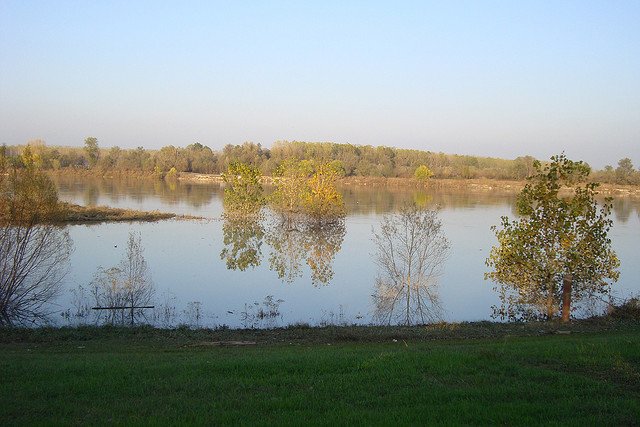Climate-related risks for groundwater and related ecosystems pose a great concern to scientists and water authorities involved in the protection of these valuable resources.
The close link of global warming with water cycle alterations encourages research to deepen current knowledge on relationships between climate trends and status of water systems, and to develop predictive tools for their sustainable management, copying with key principles of EU water policy.
Within the European project Life + TRUST (Tool for Regional-scale assessment of groundwater Storage improvement in adaptation to climaTe change), CMCC researchers developed a Regional Risk Assessment (RRA) methodology to identify climate change impacts on groundwater and associated ecosystems (e.g. surface waters, agricultural areas, natural environments) and to classify areas at risk in the high and middle Veneto and Friuli Plain (Italy). The results were published in a paper in the scientific journal “Science of The Total Environment”.
Relevant outcomes emerged from the research; in particular, it seems that potential climate change impacts will occur in the case study area, but such impacts will have only limited impacts on croplands, forests and natural environments (i.e. on related ecosystems), while more severe consequences are expected on water availability for agricultural and other uses (about 80% of agricultural areas and 27% of groundwater body at risk).
The abstract of the paper:
Climate change impact assessment on water resources has received high international attention over the last two decades, due to the observed global warming and its consequences at the global to local scale. In particular, climate-related risks for groundwater and related ecosystems pose a great concern to scientists and water authorities involved in the protection of these valuable resources. The close link of global warming with water cycle alterations encourages research to deepen current knowledge on relationships between climate trends and status of water systems, and to develop predictive tools for their sustainable management, copying with key principles of EU water policy. Within the European project Life + TRUST (Tool for Regional-scale assessment of groundwater Storage improvement in adaptation to climaTe change), a Regional Risk Assessment (RRA) methodology was developed in order to identify impacts from climate change on groundwater and associated ecosystems (e.g. surface waters, agricultural areas, natural environments) and to rank areas and receptors at risk in the high and middle Veneto and Friuli Plain (Italy). Based on an integrated analysis of impacts, vulnerability and risks linked to climate change at the regional scale, a RRA framework complying with the Sources–Pathway–Receptor–Consequence (SPRC) approach was defined. Relevant impacts on groundwater and surface waters (i.e. groundwater level variations, changes in nitrate infiltration processes, changes in water availability for irrigation) were selected and analyzed through hazard scenario, exposure, susceptibility and risk assessment. The RRA methodology used hazard scenarios constructed through global and high resolution model simulations for the 2071–2100 period, according to IPCC A1B emission scenario in order to produce useful indications for future risk prioritization and to support the addressing of adaptation measures, primarily Managed Artificial Recharge (MAR) techniques. Relevant outcomes from the described RRA application highlighted that potential climate change impacts will occur with different extension and magnitude in the case study area. Particularly, qualitative and quantitative impacts on groundwater will occur with more severe consequences in the wettest and in the driest scenario (respectively). Moreover, such impacts will likely have little direct effects on related ecosystems – croplands, forests and natural environments – lying along the spring area (about 12% of croplands and 2% of natural environments at risk) while more severe consequences will indirectly occur on natural and anthropic systems through the reduction in quality and quantity of water availability for agricultural and other uses (about 80% of agricultural areas and 27% of groundwater bodies at risk).
Read the full paper on ScienceDirect website.
Visit the Life + project TRUST website.
Photo by Pink Ayla.




